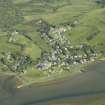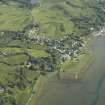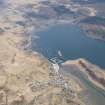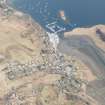Ardfern, Craignish Parish Church
Church (19th Century) (1826)
Site Name Ardfern, Craignish Parish Church
Classification Church (19th Century) (1826)
Alternative Name(s) Ardfern Church Of Scotland Parish Church
Canmore ID 141238
Site Number NM80SW 62
NGR NM 80419 04176
Datum OSGB36 - NGR
Permalink http://canmore.org.uk/site/141238
- Council Argyll And Bute
- Parish Craignish
- Former Region Strathclyde
- Former District Argyll And Bute
- Former County Argyll
EXTERNAL REFERENCE
Scottish Record Office
Plans and specifications for church to be built at Ardfern. One plan signed Donald McDougall - the other Donald Clark.
1820-1825 GD 64/1/184
Photographic Survey (April 1962)
Three photographs of Craignish Manse and Church, Argyll, by the Scottish Development Department in 1962 (in the Scottish National Buildings Record Collection)
Field Visit (October 1984)
This church stands between the road and the shore of Loch Craignish at the S end of Ardfern village. The main block, which is hip-roofed, measures 15.3m in overall length from E to w by 10.4m transversely. The principal or N elevation is of three bays and has a slightly advanced and pedimented centrepiece which contains a blocked doorway. The date 1826is inscribed within the tympanum, and the pediment is surmounted by a belfry. Throughout, the walls are of harled rubble-masonry with exposed margins and quoins of droved sandstone; the windows are uniformly round-headed with glazing-bars forming simple intersecting tracery. Each of the three-bay end-walls has a central doorway and a blind window-opening corresponding to the positions of internal stairs. A single-storey vestry projects from the centre of the S front.
Internally, the pulpit is set on a podium against the centre of the S wall, fronted by the main central aisle and flanked by narrow N-S access-aisles dividing up the blocks of plain bench pews. The two-decker pulpit is complete with octagonal canopy and sounding-board framed within reeded pilasters. Enclosed stone stairs at each end give access to the gallery, which has a sunk-panelled front carried on five short timber columns. The bench-pews in the gallery have reflex curved ends, and most of the front pews are gated.
The oldest of the mural monuments within the church is a white marble plaque commemorating Colin Campbell of Jura, who died in 1848. The bell, which was in the vestry at the date of survey, measures 0.4m in diameter at the skirt, and is 0.33m high. It bears a five-line inscription recording that it was originally given to the parish church of Craignish in1750 by Captain Archibald Campbell (then owner of the Barbreck estate), and was founded in Edinburgh by John Milne; it was recast at the expense of the heritors by John C Wilson, Glasgow, in 1858.
This church replaced an older one on the same site, which was possibly built in 1698 and was repaired shortly before 1793 (en.1). Its replacement was discussed by the heritors in 1819 and in the following year a plan and specifications for a church seating 523 persons were produced by Donald MacDougall, 'architect in Craignish (en.2*). It was not until 1824 that the Presbytery of lnveraray inspected the old church and manse and agreed with the heritors that a new church should be built. Further plans were submitted, and in 1825 the heritors selected one by Donald MacDougall for its internal arrangements, 'but suggested some alterations on the external fabrick’ (en.3*). The completed building was accepted by the Presbytery in 1827, when it was described as seating 500 persons, with room for 52 at the communion tables (en.4).
RCAHMS 1992, visited October 1984






























































